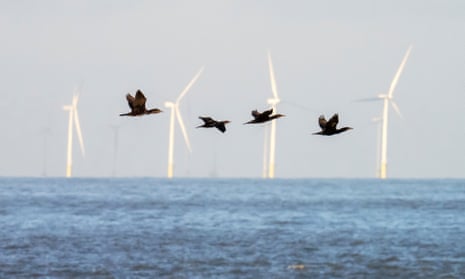The recent decision by the environment minister, Tanya Plibersek, to block the development of a “renewable energy terminal” at Port of Hastings in the Western Port wetland east of Melbourne brings into stark focus the increasing tension between two commitments of all Australia’s governments – solving the biodiversity crisis and the climate crisis. We need solutions to this conundrum quickly, otherwise there will be lost opportunities, expensive mistakes and even more extinctions.
Humanity faces two existential crises. The climate crisis we know well; the second, less appreciated threat to humanity is biodiversity loss. We are only just beginning to appreciate its effects on our economy, agriculture, health and culture.
In general, actions that are good for biodiversity, such as habitat restoration and First Nations-led fire management, also deliver benefits to the climate. Indeed, the science tells us that “nature-based” solutions can deliver at least one third of promised global cuts in emissions. Just stopping land clearing and habitat degradation is the single most important act for both slowing biodiversity loss while delivering huge gains in CO2 sequestration.
Moves to protect biodiversity almost always help slow climate breakdown and allow for adaptation to inevitable changes, but renewable energy developments are fast becoming the exception. To be the renewable superpower Australia hopes to be, the spatial impact of the associated infrastructure could be more than 5% of the entire continent, threatening and extensively fragmenting ecosystems.
Ironically, in some states, solar farms could soon be the biggest destroyers of native vegetation. Windfarms have long been known to threaten flying animals, especially migratory and large species – including our own orange-bellied parrot, one of the most endangered species on the planet; the iconic brolga; and flying foxes that are essential for pollination and seed dispersal. Associated infrastructure (roads, power lines) plus new mines for critical minerals will increase habitat loss and fragmentation.
Renewable energy projects can also impinge upon the tangible and intangible cultural values of land and seascapes held by Indigenous Australians. Partnership must be developed with First Nations groups or projects could have negative impacts on country.
Is there a solution to this looming conflict? Can we have a rapid transition to renewables and save our biodiversity too?
When the federal Environmental Protection and Biodiversity Conservation Act was first legislated in 1999 there was a call for regional biodiversity plans. Since then, federal, state and local governments have flirted with regional biodiversity plans, like the Cumberland Plain conservation plan, although none have been entirely successful in reducing extinction risks.
What would a good regional plan look like? It would need to include red zones – critical habitat for listed species, rare habitat types, Ramsar sites and world heritage areas – places where development should never even be proposed, let alone allowed.
We also need green zones – places where renewable infrastructure is economically viable and has negligible impact on biodiversity, such as land already cleared and degraded and places without concentrations of migratory species. Development approvals in the green zones should be expedited to support the rapid and efficient rollout of projects.
And the remainder is yellow – areas where development is not guaranteed but may be possible. Project proposals in yellow zones will require additional work to assess risks, to plan projects to avoid impacts to biodiversity wherever possible, to minimise unavoidable impacts and finally, will require biodiversity gains elsewhere to offset the remaining impacts.
Returning to the Port of Hastings terminal and other renewable infrastructure proposals, surely the expensive merry-go-round of ‘proposal-refusal-proposal’, could be short-circuited by a red-yellow-green traffic-light system of regional biodiversity planning?
after newsletter promotion
Categorising land upfront in this way will provide a clear pathway for developers who can avoid wasted investment in scoping projects at ultimately unsuitable sites. It would also facilitate a more rapid rollout of renewable energy infrastructure while minimising biodiversity loss.
One of the most valuable roles that governments can play is to provide strategic guidance, so that development provides the most nationally beneficial long-term outcomes it can for all Australians and for the natural values we cherish. Without such guidance developers may understandably feel that each project is a roll of the dice.
In the case of the Port of Hastings terminal, the next step should not be to rework the proposal or lobby harder – it must be to identify an alternative site outside the Ramsar wetland that meets the needs of industry with negligible environmental impacts.
Am I naive to think that a strategic approach will spur rapid cooperation between government, industry, traditional owners and other stakeholders to quickly find economically efficient renewable infrastructure sites that deliver win-win outcomes?
Hugh Possingham is chief councillor of the Biodiversity Council and an environment professor at the University of Queensland
